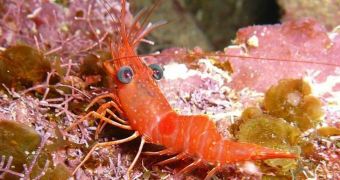A recent paper in the journal Macromolecular Materials & Engineering documents the development of a new type of plastic that is made from shrimp shells and wood flour, and that only needs a couple of weeks to break down into its key components after being placed in soil.
This means that, once people no longer have any use for it, the material can actually help support the development of natural ecosystems, as evident in the video below which shows a pea plant growing in soil treated with it.
This innovative bioplastic is the brainchild of researchers working with the Wyss Institute at the Harvard University in the United States.
In their paper, the scientists explain that, when they first attempted to come up with a new type of plastic that would be far more environmentally friendly that the one currently in use, they settled for mixing chitin, a polymer extracted from shrimp shells, with silk protein.
However, they soon found that this recipe made it quite difficult to manufacture the bioplastic that they were looking to obtain, and also came with a rather impressive price tag.
Consequently, they dropped the use of silk protein altogether, and instead turned to chitosan, i.e. a form of chitin, and wood flour, i.e. finely pulverized wood whose consistency is similar to that of sand or sawdust.
The Wyss Institute researchers chose to add wood flour into the mix in order to ensure that, apart from being able to mold the resulting bioplastic into whatever forms they desired, they would also be able to get it to keep its shape and not shrink, as it happened during several experiments, Tree Hugger reports.
The scientists working on this project claim that, after extensive research and several failed experiments, they were finally able to come up with a recipe for a bioplastic that could be molded into a three-dimensional form with stunning precision.
Their work is not yet finished, but the specialists hope that, sometime in the not so distant future, their bioplastic will come to be used on a commercial scale for the fabrication or large and complex three-dimensional shapes with the help of already developed manufacturing techniques such as casting and injection molding.
“There is an urgent need in many industries for sustainable materials that can be mass produced,” explains Don Ingber with the Harvard School of Engineering and Applied Sciences.
“Our scalable manufacturing method shows that chitosan, which is readily available and inexpensive, can serve as a viable bioplastic that could potentially be used instead of conventional plastics for numerous industrial applications,” he adds.

 14 DAY TRIAL //
14 DAY TRIAL //